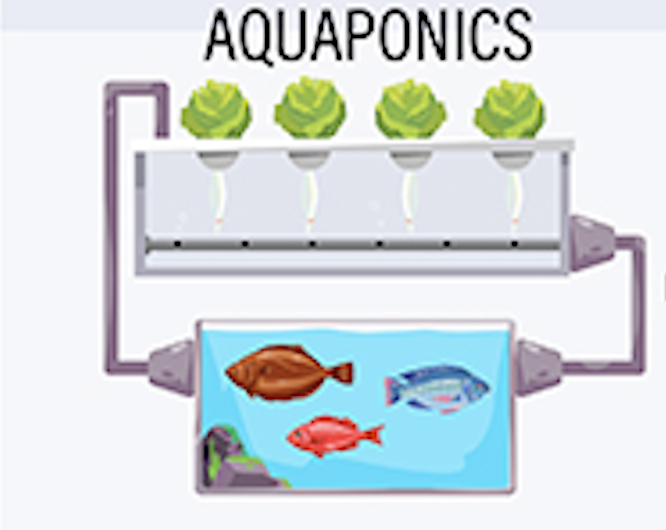What is Aquaponics?
Aquaponics includes more than just fish. It also includes both plants and bacteria. These three components are a part of a system which combines hydroponics and a recirculating aquaculture system (RAS). Hydroponics is the growing of plants without soil and instead using nutrient rich water. Recirculating aquaculture is traditional growing up of fish but with the recirculation of the water through a biofilter of bacteria, which cleans the water and circulates it back into the fish tank.

What about the Bacteria?
The bacteria play a key role in keeping the water clean for fish to live in. The bacteria perform a process called Nitrification where the ammonia is converted into nitrates. Ammonia is a toxic compound generated by fish waste. For this reason, the wastewater of the fish is circulated through a biofilter that has bacteria established in it, which converts the ammonia into nitrite, and then into nitrates. Nitrates can then be utilized as a nutrient for the plants.
What makes our system different?
Our goal with our system is to be both economically and environmentally sustainable. Our system will include to addition of algal cultivation as well as a biogas boiler and anaerobic digestor. The addition of these elements will be used to help create energy for this system and generate value added products. Algae is the most abundant plant on Earth and is known to purify water by removing nitrogen and phosphorus. The algae will clean the water to be recirculated back into the fish tank. The function of the biogas boiler and anaerobic digestor will be to utilize the algae for energy to then power any energy inputs of the Aquaponics system.
 Our integrated aquaponics system will include the traditional components of an aquaponics system along with the additional agal cultivation unit, biogas boiler and Anaerobic digestor.
Our integrated aquaponics system will include the traditional components of an aquaponics system along with the additional agal cultivation unit, biogas boiler and Anaerobic digestor.